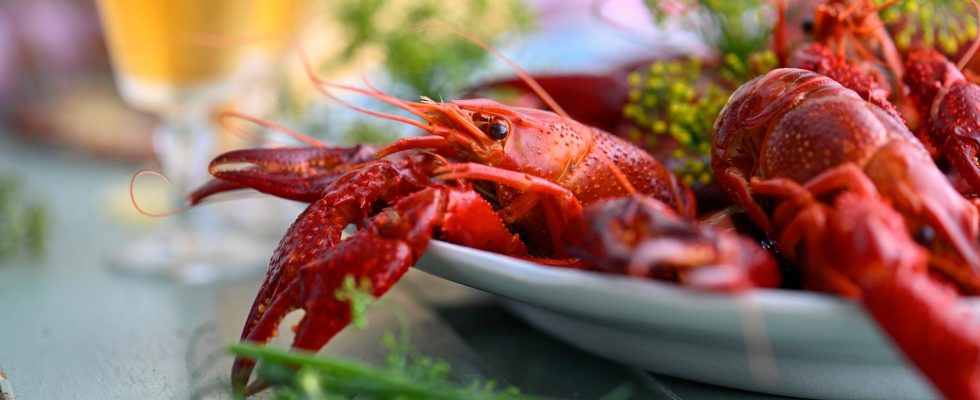The traditional start to the cancer season has already passed.
But the chilly summer can delay fishing.
If the water is too cold, the crayfish are less likely to be tempted by the bait in the cages.
In early summer, when it was warm, crayfish fishing was good. But since the onset of the cold in July, it has gotten worse.
Commercial fishermen on Vänern and Vättern testify to this, as Patrik Bohman, environmental analyst at the Swedish University of Agriculture (SLU), has been in contact with.
The reason is that the cold has contributed to the fact that the temperatures in lakes and streams have dropped, which makes the crayfish less hungry and thus less likely to be tempted by the bait in the cages.
– In order for the crayfish to become active, hungry and crawl into the cages, they need a temperature of around 17-18 degrees. If it is colder than that, like 13-14 degrees in some waters, they become inactive. They don’t get feeding behavior, stay on the bottom and are very difficult to get going, says Patrik Bohman.
Bad ingredient
If the water is too cold, the crayfish also wait to molt their shells – a process that is a prerequisite for them to grow big and beautiful.
– They have to change their shell to grow, says Patrik Bohman.
Even the large amounts of rain that have fallen in parts over the country during the summer, not least the storm Hans at the beginning of August, are a bad ingredient for good crayfish fishing.
– High water flows can bring with them increased sedimentation and the crayfish don’t like that. It settles like dust on the bottom and affects their natural habitat. Then they also become inactive, says Patrik Bohman.
The traditional start of the crayfish season was on August 7. How long it lasts varies – but the most common is that it lasts until the end of September.
Season may be delayed
However, the cold and wet summer can lead to this year’s season being delayed.
– And if the fishing is completely delayed so that you don’t get any crayfish before the latter part of September, it will be bad fishing, because then the water temperature starts to drop. Then the crayfish’s spawning period begins in October and after that they are very inactive until June, says Patrik Bohman.
According to Patrik Bohman, it is difficult to say what the fishing luck looks like in other parts of the country. But it probably looks very different, he says.
– It has been warmer in some places and colder in others. It has rained a lot in some places and less in others. Some lakes and streams will have better fishing and others worse. And so it has always been, it is local climate factors that matter.
Cancer disc in danger?
However, those who have a crayfish plate planned for the near future and want Swedish crayfish on the table need not worry.
So far, the season has only just begun and there is still plenty of room for the temperatures to rise to more optimal levels before the autumn cold takes hold and they drop again, says Patrik Bohman.
– There is every possibility for crayfish fishing to improve, I definitely think so. Generally speaking, I even think that in the end there will be similar crayfish fishing this year as in a normal year.
FACTS Crayfish and crayfish fishing
In Sweden, there are two species of freshwater crayfish: the original river crayfish and the introduced signal crayfish.
The signal crayfish is mainly found in southern and central Sweden, roughly up to the Dalälven where the river crayfish takes hold. There are also some illegal releases of signal crayfish up north, but these rarely take hold on any large scale.
Lake Vättern is the only lake in Sweden where it is permitted for the public to fish for crayfish on public water without a special permit. Fishing may take place on three consecutive weekends starting on the last Friday in August. Otherwise, private water applies.
In Sweden, approximately 2,500 tons of crayfish are caught each year, but to cover the Swedes’ needs, approximately the same amount needs to be imported. The imported crayfish come from Spain, Turkey and China, among others.
Source: Swedish University of Agriculture
Read more
